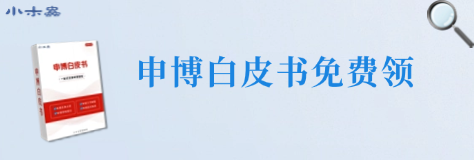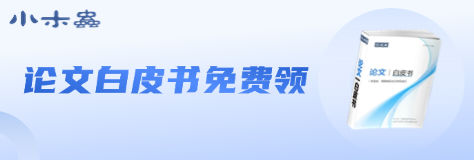| 查看: 13395 | 回复: 13 | |||||||||||||
| 当前只显示满足指定条件的回帖,点击这里查看本话题的所有回帖 | |||||||||||||
[交流]
[转载]Elsevier上发表论文的若干要求已有13人参与
|
|||||||||||||
|
全英文的看起来太费力,而且有很多拿不准的地方,看到了一个博客上面做了简单的翻译,供大家参考 转自http://blog.sciencenet.cn/blog-89935-377289.html 出版物中的伦理问题: 有关出版中伦理道德的信息参见http://www.elsevier.com/publishingethics和http://www.elsevier.com/ethicalguidelines中的伦理准则。 Conflict of interest All authors are requested to disclose any actual or potential conflict of interest including any financial, personal or other relationships with other people or organizations within three years of beginning the submitted work that could inappropriately influence, or be perceived to influence, their work. See also 2010年07月21日 - woodncy - woodncy 的博客 http://www.elsevier.com/conflictsofinterest. 利益冲突: 所有的投稿人都必须披露从其交稿前三年中可能产生不良影响的且与其工作相关的现实或潜在的利益纠纷,包括任何财务,个人或与其他人或其他组织的关系。参见http://www.elsevier.com/conflictsofinterest。 Submission declaration Submission of an article implies that the work described has not been published previously (except in the form of an abstract or as part of a published lecture or academic thesis), that it is not under consideration for publication elsewhere, that its publication is approved by all authors and tacitly or explicitly by the responsible authorities where the work was carried out, and that, if accepted, it will not be published elsewhere including electronically in the same form, in English or in any other language, without the written consent of the copyright-holder. 提交声明: 提交一篇文章意味着该文章所述工作尚未发布,(可以以摘要的形式发布,或作为学术演讲的形式发布),而且也没有考虑在其他地方出版。如果该文章被接受,它的出版需要得到所有作者和主管部门的同意。而且除非得到了版权持有人的书面同意,不能以其他形式出版(无论英文或其他语言,纸质还是电子版)。 Copyright Upon acceptance of an article, authors will be asked to complete a 'Journal Publishing Agreement' (for more information on this and copyright see 2010年07月21日 - woodncy - woodncy 的博客 http://www.elsevier.com/copyright). Acceptance of the agreement will ensure the widest possible dissemination of information. An e-mail will be sent to the corresponding author confirming receipt of the manuscript together with a 'Journal Publishing Agreement' form or a link to the online version of this agreement. Subscribers may reproduce tables of contents or prepare lists of articles including abstracts for internal circulation within their institutions. Permission of the Publisher is required for resale or distribution outside the institution and for all other derivative works, including compilations and translations (please consult 2010年07月21日 - woodncy - woodncy 的博客 http://www.elsevier.com/permissions). If excerpts from other copyrighted works are included, the author(s) must obtain written permission from the copyright owners and credit the source(s) in the article. Elsevier has preprinted forms for use by authors in these cases: please consult 2010年07月21日 - woodncy - woodncy 的博客 http://www.elsevier.com/permissions. 版权: 一旦文章被接受,作者将被要求填写一份'杂志出版协议'(更多信息见http://www.elsevier.com/copyright)。接受该协议将确保该文章能够得到尽可能广泛地传播。一封电子邮件将被发送到通信作者,以确认该手稿被接受,并附带“杂志出版协议”的在线版本的链接。用户可以复制表的内容以及文章准备清单包括摘要,以供单位内部流通所需。如果需要将文章及其衍生品(包括翻译和汇编)转售或在本单位之外发布,必须得到出版商的同意(请咨询http://www.elsevier.com/permissions)。如果文章中包括其他受版权保护的作品,作者必须取得著作权人的书面许可。Elsevier公司已为该情况准备了预先印制的表单,供作者使用。详情请咨询http://www.elsevier.com/permissions。 Retained author rights As an author you (or your employer or institution) retain certain rights; for details you are referred to: 2010年07月21日 - woodncy - woodncy 的博客 http://www.elsevier.com/authorsrights. 作者保有的权利: 作为作者(或作者的雇主、机构),您将保留一定的权利,详细情况请参见:http://www.elsevier.com/authorsrights。 Role of the funding source You are requested to identify who provided financial support for the conduct of the research and/or preparation of the article and to briefly describe the role of the sponsor(s), if any, in study design; in the collection, analysis and interpretation of data; in the writing of the report; and in the decision to submit the paper for publication. If the funding source(s) had no such involvement then this should be stated. Please see 2010年07月21日 - woodncy - woodncy 的博客 http://www.elsevier.com/funding. 对资金来源的作用 请确定谁为研究提供金融支持,或为文章的准备工作提供帮助,并简要介绍赞助者在文章撰写工作中的作用,诸如研究方案设计、数据收集、分析和解释,报告的撰写,以及决定文章提交等等。请参阅http://www.elsevier.com/funding。 Language and language services Please write your text in good English (American or British usage is accepted, but not a mixture of these). Authors who require information about language editing and copyediting services pre- and post-submission please visit 2010年07月21日 - woodncy - woodncy 的博客 http://www.elsevier.com/languageediting or our customer support site at http://epsupport.elsevier.com for more information. 语言和语言服务 请使用良好的英语进行写作(美国式或英国式的英语都可以被接受,但不是两种风格的混合物)。作者如果在提交稿件前后需要语言编辑和审稿服务请咨询http://epsupport.elsevier.com了解更多信息,请访问客户支援网站http://www.elsevier.com/languageediting。 Submission Submission to this journal proceeds totally online and you will be guided stepwise through the creation and uploading of your files. The system automatically converts source files to a single PDF file of the article, which is used in the peer-review process. Please note that even though manuscript source files are converted to PDF files at submission for the review process, these source files are needed for further processing after acceptance. All correspondence, including notification of the Editor's decision and requests for revision, takes place by e-mail removing the need for a paper trail. 稿件提交: 稿件的提交完全通过网络提交,您将得到逐步的引导并建立和上传您的文件。该系统将源文件自动转换为一个PDF格式的文件,该文件将用在同行审评过程中。请注意,即使稿件的源文件在提交审查的过程中被转换为PDF格式的文件,这些文件在被接受后仍需要作进一步处理。所有的联系,包括通知编辑的决定,关于修改的要求,都通过电子邮件来进行,这样省去了纸张的传递和处理。 Submit your article Please submit your article via 2010年07月21日 - woodncy - woodncy 的博客 http://ees.elsevier.com/ymssp/ 提交您的文章: 请通过以下网址进行稿件提交:http://ees.elsevier.com/ymssp/ Referees Please submit, with the manuscript, the names, addresses and e-mail addresses of 3 potential referees. Note that the editor retains the sole right to decide whether or not the suggested reviewers are used. 审稿人: 请随稿件提交三个推荐审稿人名单,包括他们的名字,地址和电子邮件地址。请注意,编辑保留是否采用所建议的审稿人的权利。 Addtional Information Editorial process: The Editor is responsible for journal policy, in consultation with the members of the Editorial Board. Each paper submitted for publication will be normally subject to review and criticism by two informed, independent, anonymous referees, and authors will be provided with copies of these criticisms so that they can make revisions and improvements to their manuscripts before publication. Every effort will be made by the Editor and publishers to ensure prompt publication. 编辑过程: 编辑为刊物的取稿政策负责,与编辑委员会的成员进行咨询。通常每篇文章将受到两名独立的匿名审稿人的审查和评论,作者将收到这些评论的副本,使作者能够在出版前修订和改善他们的手稿。编辑和出版者将尽一切努力以确保文章的及时出版。 准备工作 Types of Paper Original research papers, state-of-the-art reviews, short communications, letters for quick publication (maximum length two pages), letters to the editor, news items, 'work in progress' (maximum length two pages), calendar inserts 论文的种类: 包括原始性研究论文,当前技术综述,短通讯,快速出版的信件(最多两页),给编辑的信,新闻,'工作进展'(最大长度2页),calendar inserts(这个calendar inserts不知道是什么意思,请大侠告诉我)。 Use of wordprocessing software It is important that the file be saved in the native format of the wordprocessor used. The text should be in single-column format. Keep the layout of the text as simple as possible. Most formatting codes will be removed and replaced on processing the article. In particular, do not use the wordprocessor's options to justify text or to hyphenate words. However, do use bold face, italics, subscripts, superscripts etc. Do not embed "graphically designed" equations or tables, but prepare these using the wordprocessor's facility. When preparing tables, if you are using a table grid, use only one grid for each individual table and not a grid for each row. If no grid is used, use tabs, not spaces, to align columns. The electronic text should be prepared in a way very similar to that of conventional manuscripts (see also the Guide to Publishing with Elsevier: 2010年07月21日 - woodncy - woodncy 的博客 http://www.elsevier.com/guidepublication). Do not import the figures into the text file but, instead, indicate their approximate locations directly in the electronic text and on the manuscript. See also the section on Electronic illustrations. To avoid unnecessary errors you are strongly advised to use the "spell-check" and "grammar-check" functions of your wordprocessor 文字处理软件的使用: 使用文字处理软件时必须将文件保存问该软件自带格式。文本应为单栏格式。文本布局尽可能简单。在处理文章时,大多数处理软件的格式代码将被删除或被取代。不要使用文字处理软件的自带选项来调整文本或者断字功能(个人理解,就是对齐和换行的时候的设定问题)。不过,可以使用粗体,斜体,下标,上标等字体,不要嵌入“图形设计”方程或表格(个人理解就是不要把公式和表格做成图片格式放到文本中),而是使用文字处理软件的自带功能(诸如表格功能和公式编辑器)。当制表时,不要画竖线,每列只有一个横线隔断(个人理解就是我们常用的三横线表格)。如果没有使用网格,使用Tab而不是空格来对齐列。电子文本应准备的方式非常类似于传统的手稿(参见Elsevier:http://www.elsevier.com/guidepublication出版指南)。不要将图片导入到文本文件中,而是在文本中标明它的大致位置,参见电子插图部分的说明。为了避免文字和语法错误,强烈建议你使用文字处理软件的“拼写检查”和“语法检查”功能,以避免不必要的错误。. Article structure Subdivision - numbered sections Divide your article into clearly defined and numbered sections. Subsections should be numbered 1.1 (then 1.1.1, 1.1.2, ...), 1.2, etc. (the abstract is not included in section numbering). Use this numbering also for internal cross-referencing: do not just refer to "the text". Any subsection may be given a brief heading. Each heading should appear on its own separate line. 文章的结构: 细分 - 请将你的文章划分成明确界定的几个部分并进行编号。主要部分的下层编号为1.1(其下分为1.1.1,1.1.2,...), 1.2等(摘要不编号)。文章内部引用时也采用这个编号。每个部分要给一个简短的标题。每个标题应出现在单独的一行。 以下是文章中应该包括哪些部分: Introduction State the objectives of the work and provide an adequate background, avoiding a detailed literature survey or a summary of the results. 介绍: 介绍工作的目的和研究背景,不要写成文献综述或者总结。 Material and methods Provide sufficient detail to allow the work to be reproduced. Methods already published should be indicated by a reference: only relevant modifications should be described. 材料和方法: 提供足够的研究细节,使该工作可以被别人重复。已经出版的方法应加上参考标注:相关的修改,应加以说明。 Theory/calculation A Theory section should extend, not repeat, the background to the article already dealt with in the Introduction and lay the foundation for further work. In contrast, a Calculation section represents a practical development from a theoretical basis. 理论/计算: 理论部分应该为对已介绍的其他文章中理论进行进一步延伸和发展,而不是重复。并为要开展的工作奠定理论基础。计算部分为根据理论依据进行的实际发展。 Results Results should be clear and concise. 结果: 结果应该简明扼要。 Discussion This should explore the significance of the results of the work, not repeat them. A combined Results and Discussion section is often appropriate. Avoid extensive citations and discussion of published literature. 讨论: 应该探讨的工作结果的重要性,而不是讲述工作的结果。通常可以将结果和讨论部分合并。避免就已引用和发表的文献进行讨论。 Conclusions The main conclusions of the study may be presented in a short Conclusions section, which may stand alone or form a subsection of a Discussion or Results and Discussion section. 结论: 结论部分应该将研究的主要结论进行展示,该部分可以单独为文章的一个部分,也可以和讨论及结果部分合并。 Appendices If there is more than one appendix, they should be identified as A, B, etc. Formulae and equations in appendices should be given separate numbering: Eq. (A.1), Eq. (A.2), etc.; in a subsequent appendix, Eq. (B.1) and so on. 附录: 如果有一个以上的附件,应标识为A,B,...以此类推。附录中的公式和方程应单独编号:如Eq. (A.1), Eq. (A.2), 以此类推。 Essential title page information ? Title. Concise and informative. Titles are often used in information-retrieval systems. Avoid abbreviations and formulae where possible. ? Author names and affiliations. Where the family name may be ambiguous (e.g., a double name), please indicate this clearly. Present the authors' affiliation addresses (where the actual work was done) below the names. Indicate all affiliations with a lower-case superscript letter immediately after the author's name and in front of the appropriate address. Provide the full postal address of each affiliation, including the country name, and, if available, the e-mail address of each author. ? Corresponding author. Clearly indicate who will handle correspondence at all stages of refereeing and publication, also post-publication. Ensure that telephone and fax numbers (with country and area code) are provided in addition to the e-mail address and the complete postal address. ? Present/permanent address. If an author has moved since the work described in the article was done, or was visiting at the time, a "Present address" (or "Permanent address"  may be indicated as a footnote to that author's name. The address at which the author actually did the work must be retained as the main, affiliation address. Superscript Arabic numerals are used for such footnotes. may be indicated as a footnote to that author's name. The address at which the author actually did the work must be retained as the main, affiliation address. Superscript Arabic numerals are used for such footnotes.基本信息: 标题:简明扼要。标题通常用于信息检索系统。在标题中应该尽可能避免缩写和公式。 作者姓名和联系方式:如果作者的姓是模糊的(例如,双姓),请注明清楚(老外就他妈的事多,很多外国人的姓有两个,甚至多个,大概是几个家族联姻造成的结果,为了防止歧义,需要进行标注。大概和我们国家的张曹氏,王李氏类似吧)。提交作者的单位地址(正在工作的那个单位)。如果几个作者的单位不同,在作者的名字后加一个小写的字母进行分类标识,并标在相应的单位地址的前面也写上这个小写的字母。提供完整的邮政地址,包括国家名称,如果有的话,提供每个作者的电子邮件地址。 通讯作者:标明哪位作者将处理出版过程中的各项任务。除了电子邮件地址和邮政地址,还要确保提供电话和传真号码,附带国家和地区代码。 现在/永久地址:如果作者完成了论文中所述研究工作后跳槽了,或者是外出访问,那么应该在作者的名字后脚注上作者的现在地址。作者完成论文所述工作的那个单位必须保留为主体和联系地址。这种脚注用阿拉伯数字进行标识。 Abstract A concise and factual abstract is required. The abstract should state briefly the purpose of the research, the principal results and major conclusions. An abstract is often presented separately from the article, so it must be able to stand alone. For this reason, References should be avoided, but if essential, then cite the author(s) and year(s). Also, non-standard or uncommon abbreviations should be avoided, but if essential they must be defined at their first mention in the abstract itself. 摘要: 摘要必须简明扼要。摘要应当简要说明研究的目的,主要成果和重要结论。摘要往往作为文章一个单独部分,所以它必须能够独立。基于这个原因,摘要中应该避免出现引用文献,但是如果必要,也可以引用文献作者和时间。此外,非标准或特殊缩写也应该避免,但是如果必要,缩写必须在文章中的第一次提到时给出定义。 Graphical abstract A Graphical abstract is optional and should summarize the contents of the paper in a concise, pictorial form designed to capture the attention of a wide readership online. Authors must provide images that clearly represent the work described in the paper. Graphical abstracts should be submitted as a separate file in the online submission system. Maximum image size: 400 × 600 pixels (h × w, recommended size 200 × 500 pixels). Preferred file types: TIFF, EPS, PDF or MS Office files. See 2010年07月21日 - woodncy - woodncy 的博客 http://www.elsevier.com/graphicalabstracts for examples. 图片摘要: 图片摘要是可选的,应能够简要概括文章的内容,以吸引大量读者在线关注。作者必须提供能够清晰描述文章中的工作的图片。图片摘要应当作为独立文件在网上提交系统提交。最大图像尺寸:400 × 600像素(高×宽,建议大小200 × 500像素)。首选文件类型:TIFF格式,EPS,PDF和MS Office文件。参见http://www.elsevier.com/graphicalabstracts。 Research highlights Research highlights are a short collection of bullet points that convey the core findings of the article. Research highlights are optional and should be submitted in a separate file in the online submission system. Please use 'Research highlights' in the file name and include 3 to 5 bullet points (maximum 85 characters per bullet point including spaces). See 2010年07月21日 - woodncy - woodncy 的博客 http://www.elsevier.com/researchhighlights for examples. 研究重点: 研究重点是文章主要发现和成果的集合,传达文章的核心结论。研究重点是可选项,应当作为单独文件在网上提交系统提交。请使用“Research highlights”作为文件名,包括3至5个要点(最多85个字符,包括空格)。例子参见http://www.elsevier.com/researchhighlights。 Keywords Immediately after the abstract, provide a maximum of 6 keywords, using American spelling and avoiding general and plural terms and multiple concepts (avoid, for example, "and", "of"  . Be sparing with abbreviations: only abbreviations firmly established in the field may be eligible. These keywords will be used for indexing purposes. . Be sparing with abbreviations: only abbreviations firmly established in the field may be eligible. These keywords will be used for indexing purposes.关键词: 关键词放在摘要的后面,最多提供6个关键字,使用美式拼写、避免一般性的术语以及歧义(例如,应避免“and,“of)。只有当一个缩写在该领域被广泛接受时,才可以作为关键词。关键词主要用于检索目的。 Abbreviations Define abbreviations that are not standard in this field in a footnote to be placed on the first page of the article. Such abbreviations that are unavoidable in the abstract must be defined at their first mention there, as well as in the footnote. Ensure consistency of abbreviations throughout the article. 缩写: 如果一个缩写不是这个领域的标准,那么在文章的第一页放置一个脚注。如果摘要中必须要用到一个缩写,必须在该缩写第一次被提到时进行定义。确保缩写在整个文章中的一致性。 Acknowledgements Collate acknowledgements in a separate section at the end of the article before the references and do not, therefore, include them on the title page, as a footnote to the title or otherwise. List here those individuals who provided help during the research (e.g., providing language help, writing assistance or proof reading the article, etc.). 致谢: 致谢作为一个单独的部分放置在参考文献的前面,而不是放在第一页中,作为标题或以其他方式脚注。在致谢中列出在研究过程中提供帮助的人或单位(如提供语言帮助,写作援助或校对文章等)。 Units Follow internationally accepted rules and conventions: use the international system of units (SI). If other units are mentioned, please give their equivalent in SI. 单位: 按照国际公认的规则和惯例:使用国际单位制(SI)。如果提到其他单位,请给出他们和SI之间的当量关系。 Nomenclature Follow internationally accepted rules and conventions: use the international system of units (SI). If other quantities are mentioned, give their equivalent in SI. You are urged to consult IUPAC: Nomenclature of Organic Chemistry: 2010年07月21日 - woodncy - woodncy 的博客 http://www.iupac.org/ for further information. All the 'parameters' cited in the text should be listed, in 'alphabetical order', in a seperate nomenckature section at the beginning of the paper, with their definitions and units. 'Greek symbols', 'subscripts' and 'subscripters' should be sepertly identified. Only 'ISO symbols' 命名: 遵循国际公认的规则和惯例:使用国际单位制(SI)。如果提到其他单位,请给出他们和SI之间的当量关系。您可以咨询IUPAC有关有机化学命名http://www.iupac.org/。所有文章中使用的'参数'应该按照'字母顺序,在文章开头的一个单独的部分中列写出来,包括这些参数的定义和单位。'希腊符号','下标''应分别定义。只使用ISO符号。 Math formulae Present simple formulae in the line of normal text where possible and use the solidus (/) instead of a horizontal line for small fractional terms, e.g., X/Y. In principle, variables are to be presented in italics. Powers of e are often more conveniently denoted by exp. Number consecutively any equations that have to be displayed separately from the text (if referred to explicitly in the text). 数学公式: 尽可能在正常文本中展示公式,并使用斜线/,而不是一个横线,来表示除法,如X /Y。原则上,变量应该采用斜体。指数e应采用exp表示。如果有的公式不能当成文本放置在文字中,应该作为单独一行列写,并进行编号。 Footnotes Footnotes should be used sparingly. Number them consecutively throughout the article, using superscript Arabic numbers. Many wordprocessors build footnotes into the text, and this feature may be used. Should this not be the case, indicate the position of footnotes in the text and present the footnotes themselves separately at the end of the article. Do not include footnotes in the Reference list. Table footnotes Indicate each footnote in a table with a superscript lowercase letter. 脚注: 脚注应谨慎使用。整篇文章的每一页使用大写阿拉伯数字连续进行标注,许多文字处理软件的脚注也是文本格式,这功能可以使用。(大概的意思是每页都要有页码吧,放在每页居中的下方)。如果不是这种情况,在文本中表明脚注的位置,在文章结尾处将脚注分别列写出来。参考文献中不要脚注。 表格中的脚注,每一个表的脚注上标有一个小写字母。 Artwork Electronic artwork General points ? Make sure you use uniform lettering and sizing of your original artwork. ? Save text in illustrations as "graphics" or enclose the font. ? Only use the following fonts in your illustrations: Arial, Courier, Times, Symbol. ? Number the illustrations according to their sequence in the text. ? Use a logical naming convention for your artwork files. ? Provide captions to illustrations separately. ? Produce images near to the desired size of the printed version. ? Submit each figure as a separate file. A detailed guide on electronic artwork is available on our website: 2010年07月21日 - woodncy - woodncy 的博客 http://www.elsevier.com/artworkinstructions You are urged to visit this site; some excerpts from the detailed information are given here. 艺术作品(个人认为主要就是文章中的插图): ?请确保您的艺术作品使用统一的字体和大小。 ?图片中的文字和图片一起存成图片格式。 在你的插图使用只适用以下字体:Arial,Courier, Times, Symbol.。 ?根据插图其在文章中出现的序列进行编号。 ?为您的插图文件给出一个符合逻辑的命名。 ?为插图提供一个标题。 ?插图的大小要接近的印刷版本所需要求。 ?每个插图作为一个单独的文件进行提交 。网站上有一个详细的电子艺术作品指南:http://www.elsevier.com/artworkinstructions Formats Regardless of the application used, when your electronic artwork is finalised, please "save as" or convert the images to one of the following formats (note the resolution requirements for line drawings, halftones, and line/halftone combinations given below): EPS: Vector drawings. Embed the font or save the text as "graphics". TIFF: color or grayscale photographs (halftones): always use a minimum of 300 dpi. TIFF: Bitmapped line drawings: use a minimum of 1000 dpi. TIFF: Combinations bitmapped line/half-tone (color or grayscale): a minimum of 500 dpi is required. DOC, XLS or PPT: If your electronic artwork is created in any of these Microsoft Office applications please supply "as is". Please do not: ? Supply embedded graphics in your wordprocessor (spreadsheet, presentation) document; ? Supply files that are optimised for screen use (like GIF, BMP, PICT, WPG); the resolution is too low; ? Supply files that are too low in resolution; ? Submit graphics that are disproportionately large for the content. l 无论使用什么应用程序,当您的电子艺术品完成后,请“另存为”或转换图像为下列格式之一: EPS:矢量图。嵌入的文字保存为“图形”。 l TIFF格式:彩色或灰度照片(半色调):分辨率要求最低300 dpi。 l TIFF格式:位图:分辨率要求最低1000 dpi。 l TIFF格式:点阵组合线/半色调(彩色或灰阶):分辨率要求最低500 dpi。 l DOC,XLS或PPT:如果您的电子艺术品是由Microsoft Office应用程序创建的,请直接存为该文件格式。 请不要进行如下操作: l 在文字处理软件的文件中嵌入图片; l 提供那些基于屏幕显示进行优化的文件如GIF,BMP,PICT,WPG,因为这些文件的分辨率太低 l 文件的分辨率太低 l 提交的图形大的不成比例。 Figure captions Ensure that each illustration has a caption. Supply captions separately, not attached to the figure. A caption should comprise a brief title (not on the figure itself) and a description of the illustration. Keep text in the illustrations themselves to a minimum but explain all symbols and abbreviations used. 图片标题: 确保每个插图有一个标题。标题和图片分开,而不是将标题放到图片中。标题应包括一个简短精确的名称以及图片的描述。将标题中的文字保持在最低限度,但需要解释标题中的所有的符号和缩写。 Tables Number tables consecutively in accordance with their appearance in the text. Place footnotes to tables below the table body and indicate them with superscript lowercase letters. Avoid vertical rules. Be sparing in the use of tables and ensure that the data presented in tables do not duplicate results described elsewhere in the article. 表格: 按照表格在文章中出现的次序进行编号。表格下面用小写字母加脚注对表格进行说明。避免文字垂直排列。尽量少用表格,并确保在表内显示的数据不会在文章中其他内容中被重复展示。 References Citation in text Please ensure that every reference cited in the text is also present in the reference list (and vice versa). Any references cited in the abstract must be given in full. Unpublished results and personal communications are not recommended in the reference list, but may be mentioned in the text. If these references are included in the reference list they should follow the standard reference style of the journal and should include a substitution of the publication date with either "Unpublished results" or "Personal communication" Citation of a reference as "in press" implies that the item has been accepted for publication. 参考文献: 在文中引用文章必须在文中进行标注,并在参考文献中列写出来。摘要中的参考文献必须全部列写出来。未公布的研究成果及个人通讯不建议在参考文献中列写出来,但可以在文中提及。参考文献应该遵循该刊物标准参考文献的风格,对尚未出版的文章或“个人通信”作为参考文献,标上“in press”意味着该文章已被接受等待发表。 Reference style Text: Indicate references by number(s) in square brackets in line with the text. The actual authors can be referred to, but the reference number(s) must always be given. Example: "..... as demonstrated [3,6]. Barnaby and Jones [8] obtained a different result ...." List: Number the references (numbers in square brackets) in the list in the order in which they appear in the text. Examples: Reference to a journal publication: [1] J. van der Geer, J.A.J. Hanraads, R.A. Lupton, The art of writing a scientific article, J. Sci. Commun. 163 (2000) 51–59. Reference to a book: [2] W. Strunk Jr., E.B. White, The Elements of Style, third ed., Macmillan, New York, 1979. Reference to a chapter in an edited book: [3] G.R. Mettam, L.B. Adams, How to prepare an electronic version of your article, in: B.S. Jones, R.Z. Smith (Eds.), Introduction to the Electronic Age, E-Publishing Inc., New York, 1999, pp. 281–304. 参考文献的样式: 注明引用的号码(与文章中方括号中的编号相对应)。实际作者可以在文章中提及,参考号码必须给出。例如:"..... as demonstrated [3,6]. Barnaby and Jones [8] obtained a different result ...." 按照参考文献在文章中出现的顺序进行编号和排序。 例子: 引用期刊中的文章: [1] J. van der Geer, J.A.J. Hanraads, R.A. Lupton, The art of writing a scientific article, J. Sci. Commun. 163 (2000) 51–59. 引用书中的内容: [2] W. Strunk Jr., E.B. White, The Elements of Style, third ed., Macmillan, New York, 1979. 引用书中的某一章节: [3] G.R. Mettam, L.B. Adams, How to prepare an electronic version of your article, in: B.S. Jones, R.Z. Smith (Eds.), Introduction to the Electronic Age, E-Publishing Inc., New York, 1999, pp. 281–304. Submission checklist It is hoped that this list will be useful during the final checking of an article prior to sending it to the journal's Editor for review. Please consult this Guide for Authors for further details of any item. 提交的清单: 希望这个清单将是有益的,在该文章被投稿之前进行最后的检查。你可以咨询指南投稿的任何细节。 Ensure that the following items are present: One Author designated as corresponding Author: ? E-mail address ? Full postal address ? Telephone and fax numbers All necessary files have been uploaded ? Keywords ? All figure captions ? All tables (including title, description, footnotes) Further considerations ? Manuscript has been "spellchecked" and "grammar-checked" ? References are in the correct format for this journal ? All references mentioned in the Reference list are cited in the text, and vice versa ? Permission has been obtained for use of copyrighted material from other sources (including the Web) ? Color figures are clearly marked as being intended for color reproduction on the Web (free of charge) and in print or to be reproduced in color on the Web (free of charge) and in black-and-white in print ? If only color on the Web is required, black and white versions of the figures are also supplied for printing purposes For any further information please visit our customer support site at http://epsupport.elsevier.com. 确保以下内容存在: 一个作者指定为通讯作者: ?E - mail地址 ?完整的邮政地址 ?电话和传真号码 ?所有必需的文件已被上传 ?关键词 ?所有插图名称 ?所有表(包括名称,描述,脚注) 进一步考虑 ?手稿已被“拼写检查”和“语法检查” ?参考文献符合本期刊的正确格式 ?在参考文献中中列写了文本中引用的所有文献,反之亦然 ?已获得许可版权使用从其他来源(包括网上资料) ?彩色图片被表明被用于在网上(免费),并以在黑白格式印刷 请访问我们的客户支持站点http://epsupport.elsevier.com |
» 收录本帖的淘帖专辑推荐
 如何写文章与投稿 如何写文章与投稿 |  前往职业的前方 前往职业的前方 |  科研写作 科研写作 |  SCI投稿中 SCI投稿中 |
 青椒百科 青椒百科 |  论文写作经验谈 论文写作经验谈 |  启发 启发 |  SCI投稿事项 SCI投稿事项 |
 论文-投稿 论文-投稿 |  SCI相关 SCI相关 |
» 本帖已获得的红花(最新10朵)
» 猜你喜欢
 我感觉当老师好累啊。。
已经有5人回复
我感觉当老师好累啊。。
已经有5人回复
 国内期刊审稿人数量
已经有5人回复
国内期刊审稿人数量
已经有5人回复
 中南大学 粉末冶金国家重点实验室 陈超教授课题组拟招收 1~2位博士研究生通知
已经有18人回复
中南大学 粉末冶金国家重点实验室 陈超教授课题组拟招收 1~2位博士研究生通知
已经有18人回复
 angew三个小修,返修过去已经20多天了没动静,有朋友遇到这种情况吗?
已经有5人回复
angew三个小修,返修过去已经20多天了没动静,有朋友遇到这种情况吗?
已经有5人回复
 随缘读博 一篇中科院一区Top 一篇中科院二区Top 两篇专利
已经有15人回复
随缘读博 一篇中科院一区Top 一篇中科院二区Top 两篇专利
已经有15人回复
 找不到审稿人
已经有6人回复
找不到审稿人
已经有6人回复
 职称论文
已经有13人回复
职称论文
已经有13人回复
 核心期刊那个阶段最难
已经有4人回复
核心期刊那个阶段最难
已经有4人回复
 小论文影响大论文查重吗?
已经有4人回复
小论文影响大论文查重吗?
已经有4人回复
 博后面上太难了
已经有17人回复
博后面上太难了
已经有17人回复
» 本主题相关商家推荐: (我也要在这里推广)
» 本主题相关价值贴推荐,对您同样有帮助:
 Elsevier英文期刊文章现在状态是“In Press, Accepted Manuscript”
已经有6人回复
Elsevier英文期刊文章现在状态是“In Press, Accepted Manuscript”
已经有6人回复 Elsevier修改稿投稿时要提交Highlights文件,这个文件写什么呢?
已经有20人回复
Elsevier修改稿投稿时要提交Highlights文件,这个文件写什么呢?
已经有20人回复 elsevier投稿,正文中含有不写标题的反应式图片,该如何成功投稿?
已经有11人回复
elsevier投稿,正文中含有不写标题的反应式图片,该如何成功投稿?
已经有11人回复 关于Elsevier录用通知中的AudioSlides
已经有4人回复
关于Elsevier录用通知中的AudioSlides
已经有4人回复 elsevier期刊的技术审查
已经有10人回复
elsevier期刊的技术审查
已经有10人回复 ELSEVIER期刊要求正文+图+表 一共不超过22页,我怎么办?
已经有8人回复
ELSEVIER期刊要求正文+图+表 一共不超过22页,我怎么办?
已经有8人回复 Elsevier论文发表后的free PDF没有了吗?
已经有17人回复
Elsevier论文发表后的free PDF没有了吗?
已经有17人回复 已经发表在Elsevier期刊上面的论文,是不是语法都是完全准确的?
已经有7人回复
已经发表在Elsevier期刊上面的论文,是不是语法都是完全准确的?
已经有7人回复 Elsevier上传修改稿的问题
已经有11人回复
Elsevier上传修改稿的问题
已经有11人回复 请教各位虫友elsevier中的期刊页数要求啥意思
已经有8人回复
请教各位虫友elsevier中的期刊页数要求啥意思
已经有8人回复 elsevier投稿,表格和图表相关问题求助
已经有19人回复
elsevier投稿,表格和图表相关问题求助
已经有19人回复 elsevier的论文如何查询作者全名?
已经有4人回复
elsevier的论文如何查询作者全名?
已经有4人回复 Elsevier投稿被打回 参考文献格式方面问题求助 急急~~~~~
已经有7人回复
Elsevier投稿被打回 参考文献格式方面问题求助 急急~~~~~
已经有7人回复 Elsevier, online的论文还能修改吗
已经有4人回复
Elsevier, online的论文还能修改吗
已经有4人回复 求助Elsevier的论文状态问题
已经有11人回复
求助Elsevier的论文状态问题
已经有11人回复 Elsevier(SCI) 投稿要求翻译总结
已经有28人回复
Elsevier(SCI) 投稿要求翻译总结
已经有28人回复 elsevier上我的文章已通知接收,为什么跟踪状态查不了
已经有19人回复
elsevier上我的文章已通知接收,为什么跟踪状态查不了
已经有19人回复 有人用过Elsevier webshop 的 language editing 业务吗?
已经有12人回复
有人用过Elsevier webshop 的 language editing 业务吗?
已经有12人回复 外文期刊大修后上传Elsevier
已经有13人回复
外文期刊大修后上传Elsevier
已经有13人回复 elsevier的编辑对论文提出修改意见,没看懂,请大家帮忙看看
已经有6人回复
elsevier的编辑对论文提出修改意见,没看懂,请大家帮忙看看
已经有6人回复 Elsevier在线投稿时图片表格问题
已经有6人回复
Elsevier在线投稿时图片表格问题
已经有6人回复 请教elsevier上传修改稿的问题
已经有11人回复
请教elsevier上传修改稿的问题
已经有11人回复 elsevier投稿上传遇到的问题
已经有10人回复
elsevier投稿上传遇到的问题
已经有10人回复 Elsevier上发表论文的作者须知-——中英文
已经有315人回复
Elsevier上发表论文的作者须知-——中英文
已经有315人回复 elsevier的期刊要求图单独传但是又要加标题。怎么办?
已经有6人回复
elsevier的期刊要求图单独传但是又要加标题。怎么办?
已经有6人回复 elsevier投稿中的图片问题
已经有15人回复
elsevier投稿中的图片问题
已经有15人回复
suitsinglee
新虫 (小有名气)
- 应助: 6 (幼儿园)
- 金币: 179
- 帖子: 64
- 在线: 8.1小时
- 虫号: 2108216
- 注册: 2012-11-05
- 性别: GG
- 专业: 地理信息系统
5楼2014-05-10 00:16:06
HPsahara
金虫 (小有名气)
- 应助: 3 (幼儿园)
- 金币: 788.5
- 散金: 4
- 帖子: 117
- 在线: 113.9小时
- 虫号: 2057492
- 注册: 2012-10-13
- 性别: MM
- 专业: 半导体光电子器件
2楼2014-04-23 22:03:51

4楼2014-05-09 21:42:48

7楼2014-10-20 10:12:33











 回复此楼
回复此楼 王榭亭前
王榭亭前



 20
20